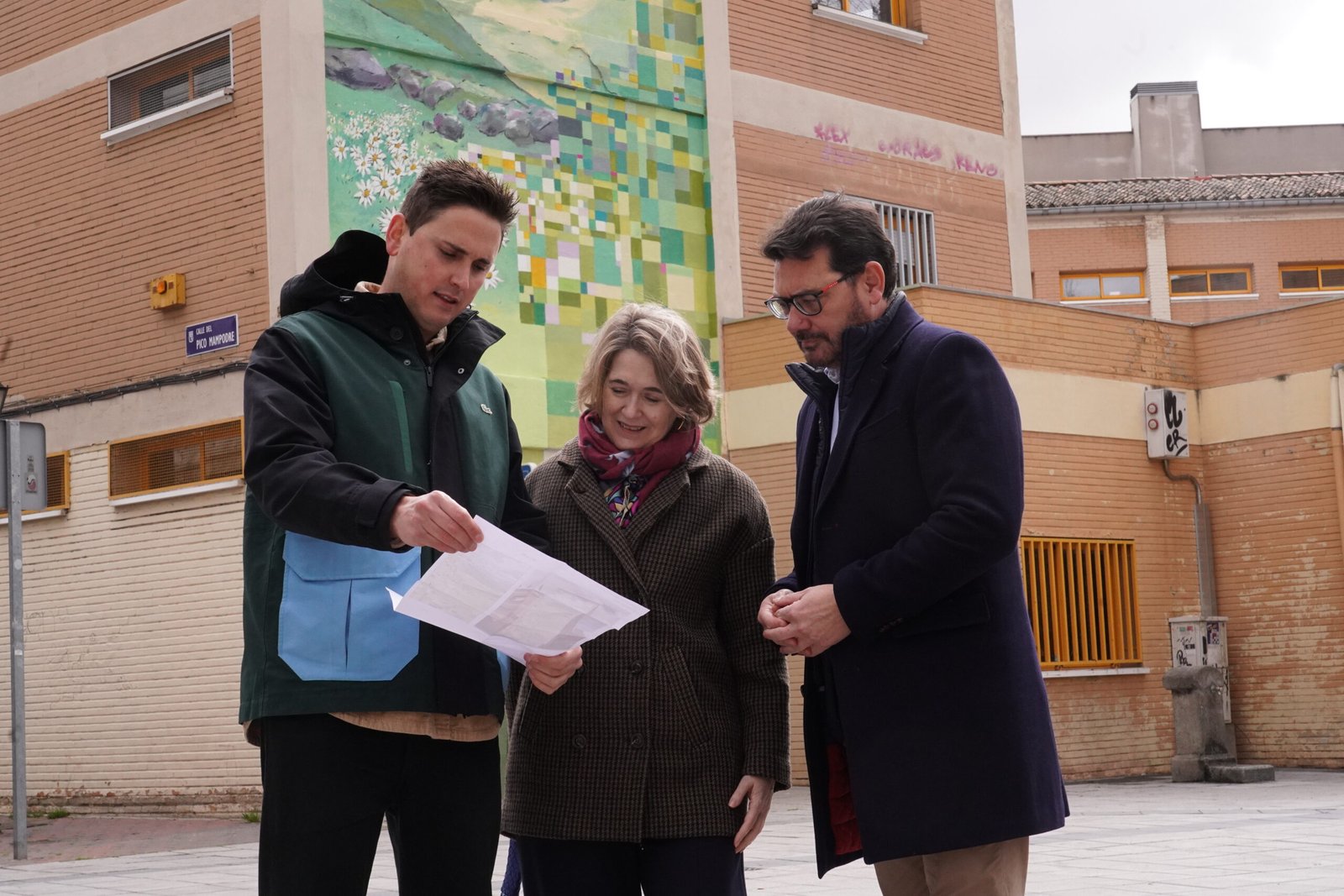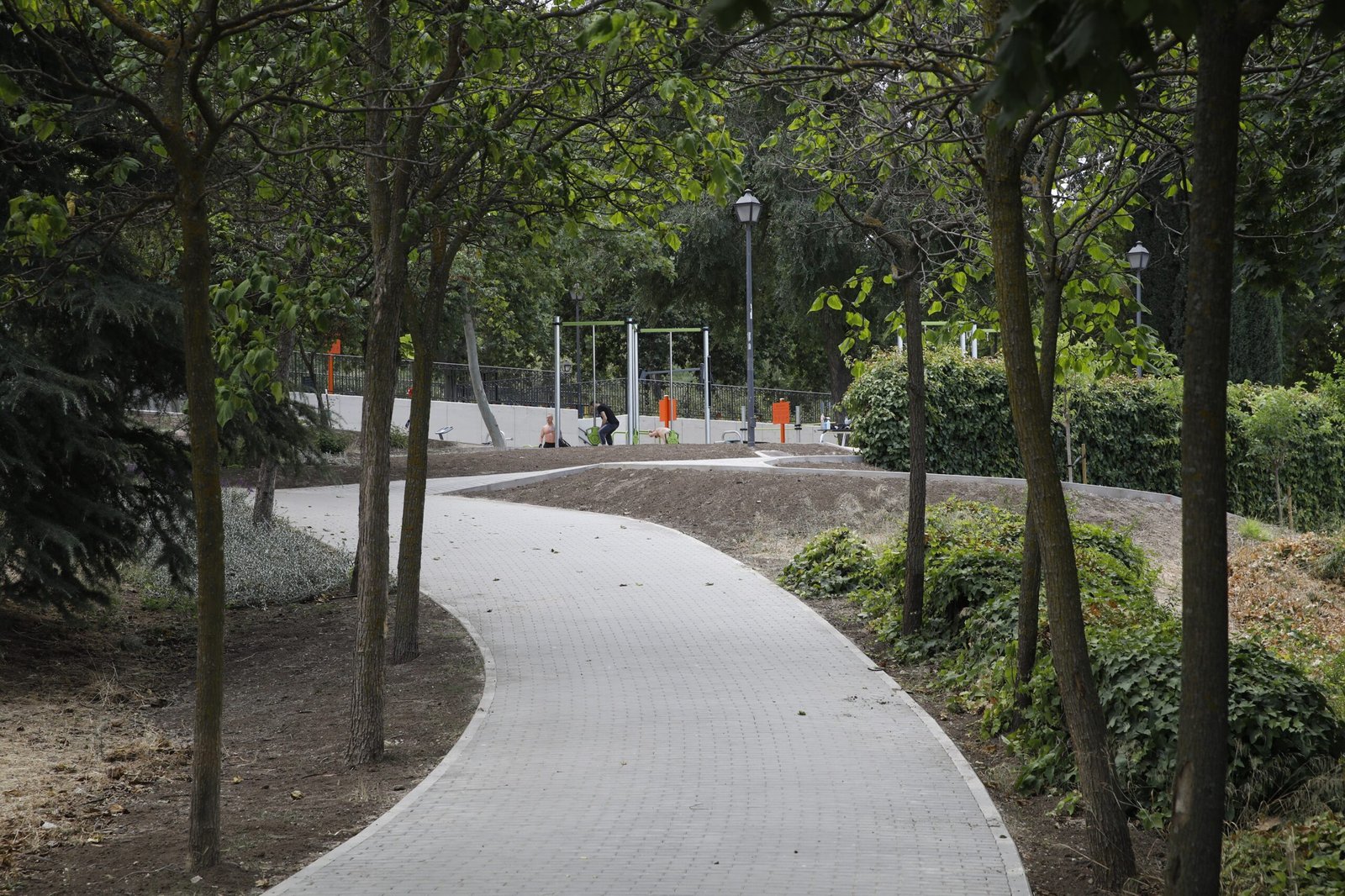Visit to two of the schools participating in this edition of ‘Compartiendo Muros’
The delegate of Culture, Tourism, and Sports, Marta Rivera de la Cruz, visited today two artistic interventions of the new edition of ‘Compartiendo Muros,’ the municipal program that aims to improve the urban landscape through actions that involve artists and the neighborhood of the districts of Madrid. The visits took place at the public schools of Infant and Primary Honduras in Villa de Vallecas and Capitán Cortés in Carabanchel, where the murals created by artists Manuel Cardiel and Jofre Oliveras, respectively, are part of this edition that brings urban art to eight public educational centers in the capital.
This year, the program promoted by the General Directorate of Cultural Heritage and Urban Landscape has revolved around the theme ‘The futures we desire,’ with the participation of renowned urban artists and the collaboration of students in the creation process. In addition to Carabanchel and Villa de Vallecas, six other districts are set to debut murals in their schools: Centro, Retiro, Tetuán, Ciudad Lineal, Villaverde, and Barajas. The total budget allocated for the eight murals amounts to €125,840.
Biotechnology and digital reality in urban art
The delegate started her tour, alongside the Councilor of Villa de Vallecas, Carlos González Pereira, at CEIP Honduras, where Manuel Cardiel’s mural portrays a critical view of the digitization of the world and the disconnection from the natural environment. His work represents a landscape that gradually fades into a pixelated effect, reflecting how excessive screen dependency can distance us from tangible reality. The goal is to raise awareness about the importance of preserving natural spaces and question how technology transforms our perception of the world.
The second of the visited murals, along with the Councilor of Carabanchel, Carlos Izquierdo, is located at CEIP Capitán Cortés, where Jofre Oliveras explores the relationship between biotechnology, sustainability, and renewable energy. The image of a girl holding a light in the middle of a garden symbolizes a future where biology becomes a key tool for sustainable technological development. This mural presents a scenario in which plants and biological processes in the environment generate clean energy, a concept based on real research on bioenergy and electricity storage in organic batteries.
Six more schools join the urban transformation
In addition to the visited murals, six other schools in Madrid have been transformed with artistic proposals that invite us to imagine the future from different perspectives. At CEIP Pi i Margall and Escuela Infantil El Duende (Centro), artist Diego Vicente San Segundo will paint a mural this summer that merges technology and nature, showing a balance where both dimensions are enhanced without excluding each other. Another proposal is that of Oriol Arumí, who, at CEIP Ciudad de Roma (Retiro), will depict a girl with a digital tablet observing a sparrow and a robotic dove, thus prompting a reflection on the coexistence between the artificial and the natural.
On the other hand, CEIP Pío XII (Tetuán) will showcase the intervention of Juan Martínez Torrente (Yksuhc Juan), who plays with the metaphor of ‘digital windows’ to explore how screens influence the perception of the world. In a different vein, Marina Capdevila has opted for a more social approach at CEIP Nuestra Señora de la Concepción (Ciudad Lineal), where she has envisioned today’s children as active and committed elderly people, challenging stereotypes about old age and promoting sustainability.
Meanwhile, at CEIP El Greco (Villaverde), the collective Difusor opts for a colorful and symbolic aesthetic to emphasize the importance of finding a balance between technological advancement and environmental conservation. Lastly, at CEIP Ciudad de Guadalajara (Barajas), ESCIF will turn their mural into a lively and participatory work where students will reinterpret the original image, reinforcing the idea that the future is collectively built.



